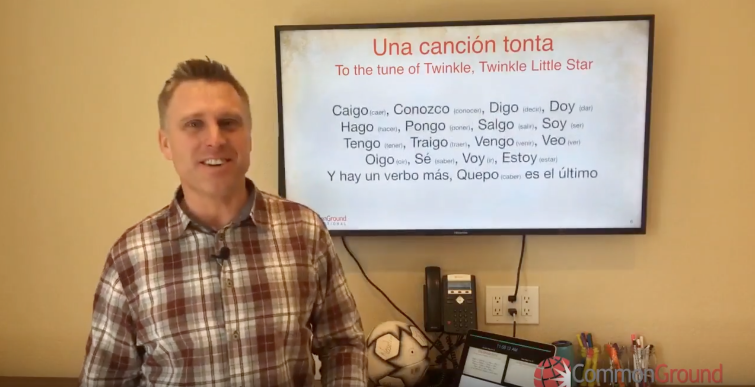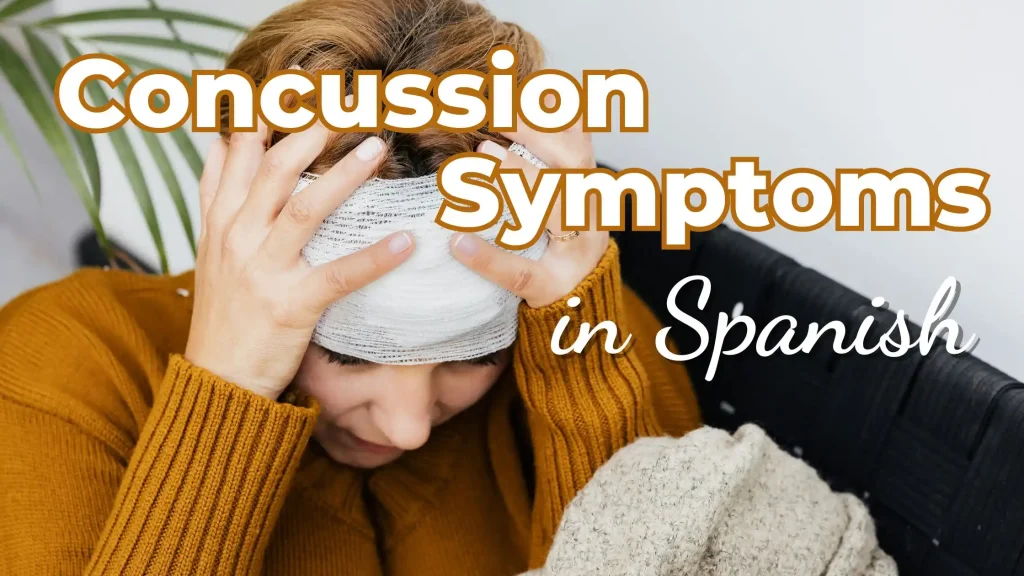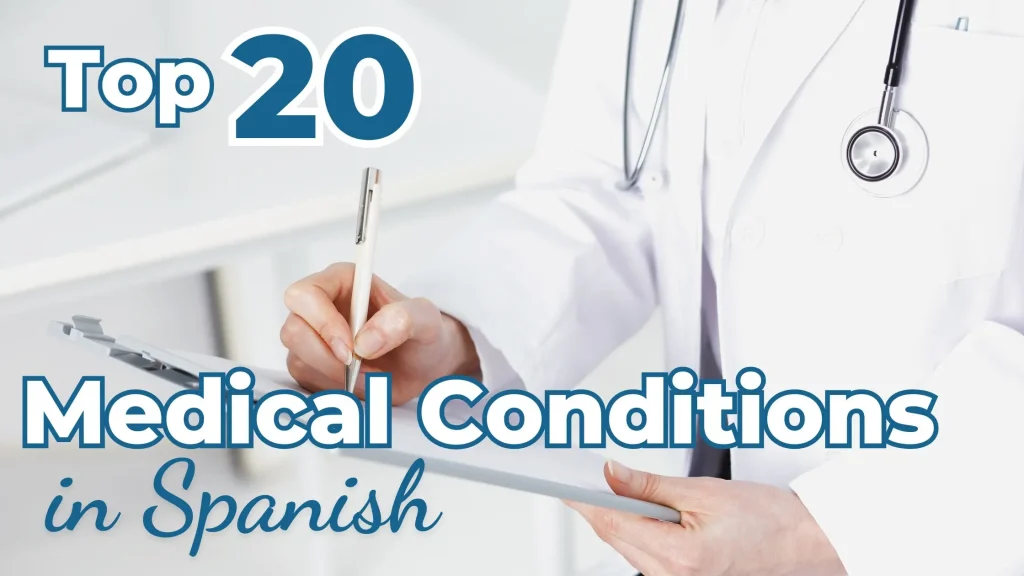This Medical Spanish lesson focuses on learning the conjugations of Irregular Present Tense Verbs in Spanish for healthcare.
There are a handful of very common irregular medical Spanish verbs that you use every day with patients. Here is the video lesson about Medical Spanish Irregular Present Tense Verbs that I taught to the Facebook group.
This is the last lesson about Present Tense Verbs and the conjugation of the irregular verbs. If you have missed the other lessons on medical Spanish present tense verbs, you can find them here:
- Regular Present Tense Verbs in Spanish for Healthcare Context
- Reflexive Verbs in Spanish
- Present Tense Stem Changing Verbs in Spanish for Healthcare Context
- Ser vs Estar (Verb To Be) in Spanish
- Special uses of ESTAR in Spanish (Verb To Be)
Let’s start the lesson with some examples. Notice that many of the irregular verbs are only irregular in the “yo” form.
Verbo Tener (To have)
- ¿Dónde le duele?
- Tengo dolor en la cadera.
- ¿Tiene usted dolor en el muslo también?
- Nosotros tenemos que hacerle un rayos equis de la cadera.
Verbo Hacer (To do / make)
- ¿Cuándo le duele?
- Me duele cuando hago ejercicio.
- ¿Con qué frecuencia hace ejercicio?
- Hacemos la radiografía para ver si hay algún problema con el hueso.
Verbo Ir (To go) (irregular en todas sus formas)
- ¿Qué tipo de ejercicio hace?
- A veces voy al gimnasio.
- ¿Cada cuanto va al gimnasio?
Verbo Salir (To go out / leave)
- ¿Corre también?
- Sí, salgo a correr tres veces por semana.
- Cuando sale a correr, ¿también estira los músculos antes?
Verbo Saber (To know)
- ¿Sabe más o menos cuándo empezó?
- No sé exactamente, tal vez hace un mes o dos.
Verbo Poner (To put)
- ¿Le duele cuando pone peso en la pierna?
- Sí, me duele cuando pongo presión.
Verbo Estar (To be / stay)
- Entiendo, voy a examinarle la cadera.
- Está bien, doctor. Estoy muy frustrado.
- ¿Le duele cuando está de pie y cuando está sentado?
Whether a verb is regular or irregular, we usually categorize the Spanish verb conjugations into 3 categories of Verbs in Spanish: AR verbs, ER verbs & IR verbs
Each type of verbs has their own conjugation pattern depending on the subject you are using:
| -AR Verbs | -ER Verbs | -IR Verbs |
| Examinar | Comer | Sufrir |
| Respirar | Beber | Vivir (To live) |
1. -AR Verbs in Spanish the present tense conjugate like this…
Singular |
Plural |
|---|---|
| Yo… o | Nosotros… amos |
| Tú… as | |
| Él, Ella, Usted… a | Ellos, Ellas, Ustedes… an |
2. -ER Verbs in Spanish in the present tense conjugate like this…You only need to change the “a” to “e” when working with -ER endings:
Singular |
Plural |
|---|---|
| Yo… o | Nosotros… emos |
| Tú… es | |
| Él, Ella, Usted… e | Ellos, Ellas, Ustedes… en |
3. -IR Verbs in Spanish in the present tense conjugate like this…-ER and -IR verbs are similar in conjugation except for the “nosotros” and “vosotros” forms:
Singular |
Plural |
|---|---|
| Yo… o | Nosotros… imos |
| Tú… es | |
| Él, Ella, Usted… e | Ellos, Ellas, Ustedes… en |
The examples we saw above show that there are some irregularities in the conjugations of those verbs. In most cases, notice that it’s just the Yo form of the verb. You can see the pattern below; only IR is irregular in more than one subject.
- Estar: Yo estoy, usted está
- Hacer: Yo hago, usted hace, nosotros hacemos
- Ir: Yo voy, usted va
- Poner: Yo pongo, usted pone
- Saber: Yo sé, usted sabe
- Salir: Yo salgo, usted sale
- Tener: Yo tengo, usted tiene, nosotros tenemos

Here is a silly (but effective way to learn the irregular Yo forms. Watch the video lesson above to learn my irregular Spanish verbs song to the tune of Twinkle, Twinkle Little Star :DPatrones interesantes / Some Interesting Patrons1. Los verbos terminados en -cer & -cir cambian: c = zc
- Conocer (To know): Conozco
- Padecer (To suffer): Padezco
- Conducir (To drive): Conduzco
2. Los verbos terminados en -ger & -gir cambian g = j
- Escoger (To choose / pick): Escojo
- Emerger (To emerge): Emerjo
- Surgir (To arise): Surjo
3. Los verbos terminados en -guir cambian: gu = g
- Seguir (To follow): Sigo
- Distinguir (To distinguish): Distingo
This lesson’s notes include the handouts from the video lesson, a list of the most common irregular present tense verbs in Spanish, some examples, and all the irregular conjugations for you to have easy access for studying.
Get your copy for free today!
Keep up the good work speaking responsible Spanish to your patients! Check out our other books, classes & products to help you !
*If the link isn’t working for you, you may need to unblock pop-ups in your browser settings





